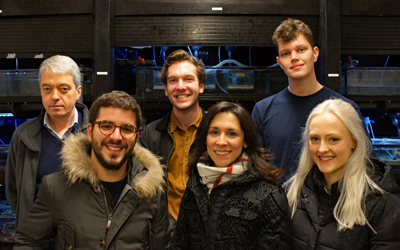Submitted by Administrator on Wed, 05/12/2018 - 10:54
A new paper published today in Nature reveals for the first time the genome regulatory landscape of the only extant descendant of the ancestor to all animals with a backbone, including us, Amphioxus. Amphioxus are widely considered to be the only representative of the evolutionary transition between invertebrates and vertebrates. Also believed by many to be a true living fossils.
This work is a joint effort with amphioxus researchers from Europe, including our own research group, led by Dr Èlia Benito-Gutiérrez. Dr Benito-Gutiérrez thinks this especially relevant because it might indicate that the molecular mechanism underlying the diversification of vertebrate forms on earth might not be only whole genome duplications but also a shift on the mode the genome is regulated and expressed. This shift might have happened during the transition between invertebrates to vertebrates, as amphioxus seems to have regions of the genome that are regulated like vertebrates while some others are regulated like invertebrates. This includes a differential usage of methylation also throughout different sites of the genome and at different stages of development, hinting at conserved phylotypic stages and illustrating amphioxus as the only invertebrate, as far known, having differential DNA demethylation in adult tissues, previously thought to be a phenomenon unique to vertebrates.
Èlia has established in the department one of the few amphioxus facilities permanently running in the world and the only one, as far as we know, outside from a marine station. The amphioxus that the group work on originate from the South of France, on the Mediterranean site. So, Cambridge has a little piece of the French Riviera, where these very rare living fossils live, in its midst.
Benito-Gutiérrez Research Group
Amphioxus functional genomics and the origins of vertebrate gene regulation. Nature 2018

